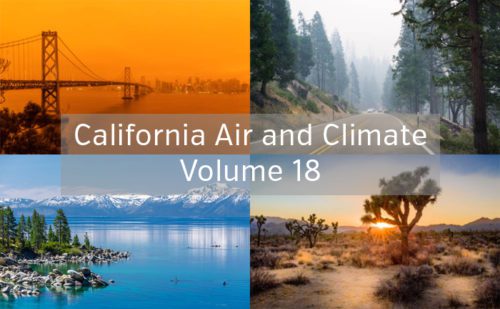California Air and Climate: EPA Waiver to CARB Regarding “Non-Road” Diesel Engine Regulations Upheld; Phasing Out Agricultural Burning in San Joaquin Valley by 2025
February 2021
California Air and Climate, Vol. 18
Ninth Circuit Upholds U.S. EPA Waiver to CARB Regarding “Non-Road” Diesel Engine Regulations
On February 10, 2021, the U.S. Court of Appeals for the Ninth Circuit denied a challenge to the U.S. Environmental Protection Agency’s (EPA) waiver of authority to the California Air Resources Board (CARB) to issue emissions regulations for “non-road” diesel engines that are stricter than federal requirements under the federal Clean Air Act (CAA). (See Dalton Trucking, Inc. v. U.S. EPA, Case No. 13-74019 (9th Cir. Feb. 10, 2021).) Several trucking and industry groups brought the challenge, which specifically relates to EPA’s granting of a request by CARB to authorize CARB’s In-Use Off-Road Diesel Fueled Fleets Regulation (Fleet Requirements). CARB’s Fleet Requirements regulate the use of non-road diesel engines often used in construction or other industrial activities with the goal to reduce certain emissions such as nitrogen oxides (NOx) and particulate matter (PM). Under the CAA, EPA “shall, after notice and opportunity for public hearing, authorize California to adopt and enforce standards and other requirements relating to the control of emissions from” specified non-road vehicles or engines “if California determines that California standards will be, in the aggregate, at least as protective of public health and welfare as applicable Federal standards.” (42 U.S.C. § 7543(e)(2)(A).) However, “[n]o such authorization shall be granted” if EPA finds that (among other things) “California does not need such California standards to meet compelling and extraordinary conditions.” (42 U.S.C. § 7543(e)(2)(A)(ii).) The industry groups argued in relevant part that CARB’s Fleet Requirements were not needed to “meet compelling and extraordinary conditions” as anticipated under the CAA. However, the Ninth Circuit disagreed and concluded that under the relevant legal test, CARB provided sufficient data and a satisfactory explanation to EPA for the Fleet Requirements so that CARB can meet its goals under the CAA. Accordingly, the Ninth Circuit denied the industry groups’ petition for review.
Agricultural Burning to be Phased-Out in San Joaquin Valley by 2025
At its February 25, 2021 meeting, CARB concurred with the San Joaquin Valley Air Pollution Control District’s (SJVAPCD) 2020 Agricultural Burning Assessment setting a pathway to end this practice by 2025. The San Joaquin Valley has 60 percent of the state’s harvested acres and contributes 36% of PM 2.5 emissions from open agriculture burning in the state, about two tons per day. SB 705, codified at California Health and Safety Code section 41855.5, called for the ending of agricultural burning in the San Joaquin Valley by 2010, but provides for the postponement of this requirement to allow for the development of viable alternatives.
SJVAPCD was one of the first air districts to restrict open air agriculture burning and by 2011, the region had reduced burning by 80 percent. Since 2011, however, burning has increased due to drought conditions and the closure of several biomass facilities. Currently, vineyard removals are the single largest category of burning in San Joaquin Valley at 71%.
The 2020 Assessment calls for a phase-out of all agricultural burning by 2025, but allows continued burning of certain crop materials including vineyard and citrus orchard removals in the interim, to allow additional time to develop viable alternatives to burning. The Assessment highlights the need to provide funding and incentives to expand access to burning alternatives and to explore biomass and bioenergy opportunities. Additional information is available here.

